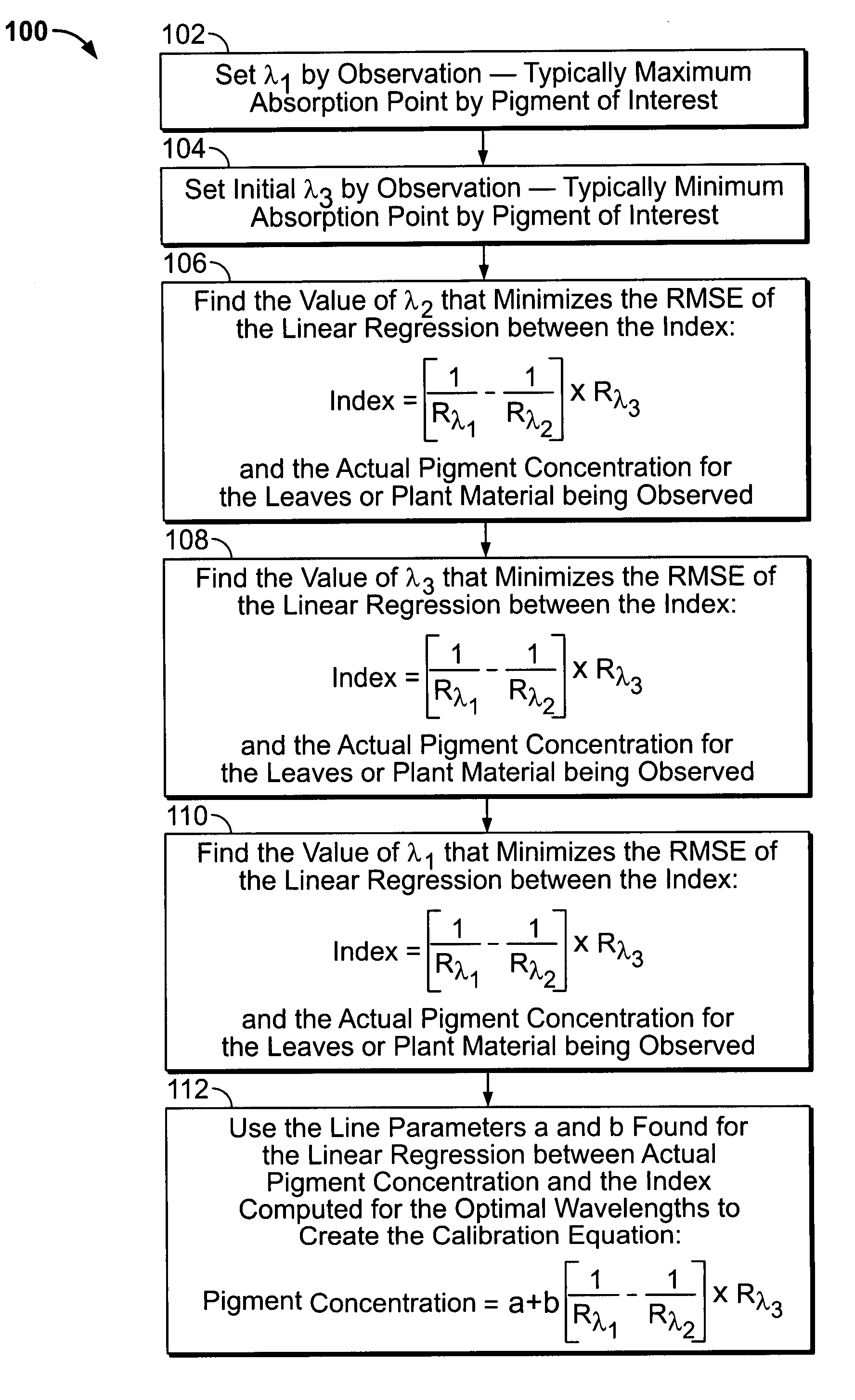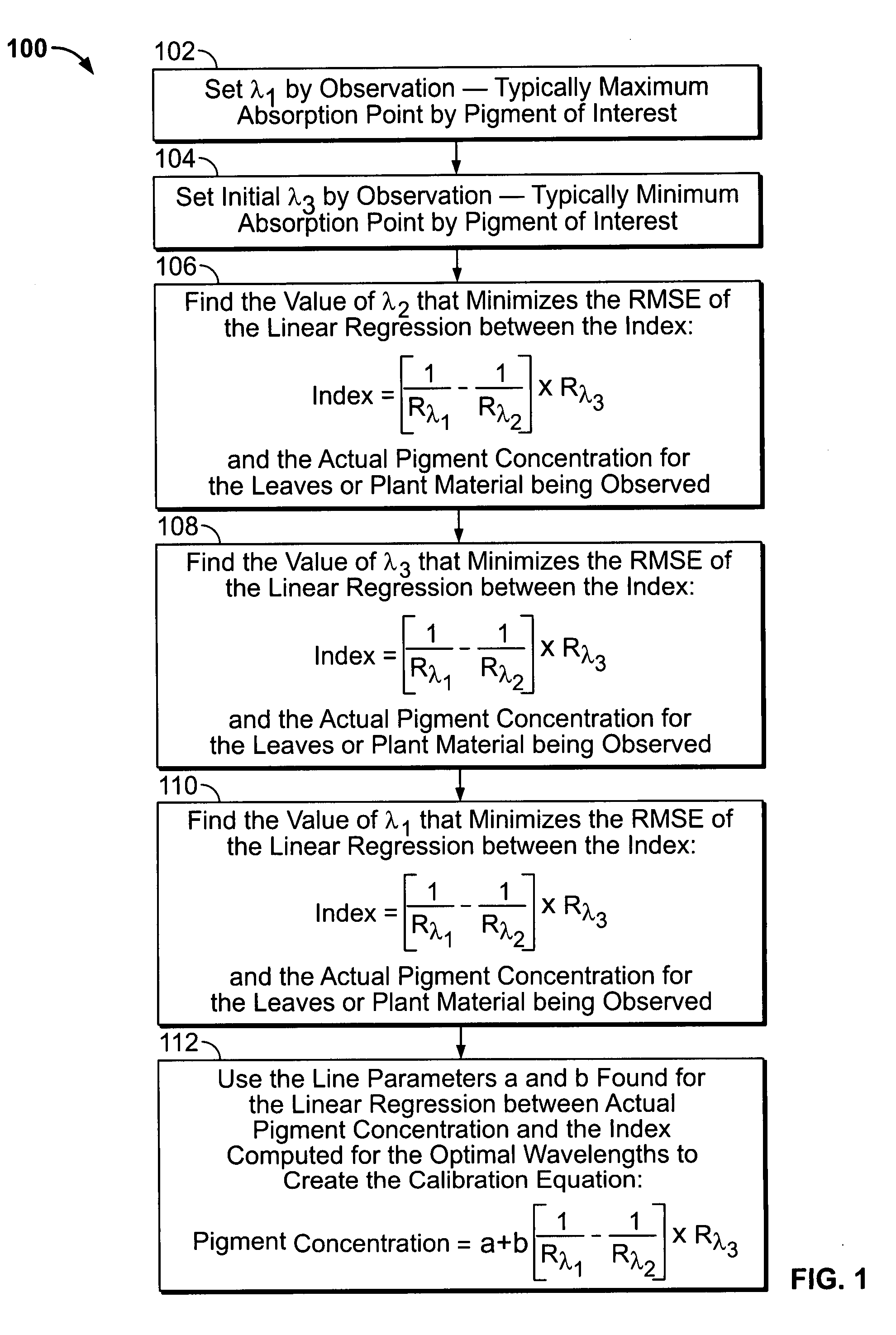System and methods for non-destructive analysis
a non-destructive analysis and system technology, applied in the field of non-destructive analysis of objects, can solve the problems of indexes having limitations in the range of use, in their inherent accuracy, and in their dependence on ancillary measurements, and achieve the effects of reducing uncertainties, reducing complexity, and improving accuracy
- Summary
- Abstract
- Description
- Claims
- Application Information
AI Technical Summary
Benefits of technology
Problems solved by technology
Method used
Image
Examples
Embodiment Construction
[0034] The present invention is a system and methods by which the state or condition of an object may be determined through the analysis of spectral bands. One embodiment of the present invention automatically detects a first spectral band having an absorption that is highly sensitive to the color of the object, such as that produced through a colorant or a pigment of interest. The embodiment then may automatically detect a second spectral band having absorption sensitive to color resulting from other colorants or pigments other than the pigment of interest. A third spectral band may also be automatically detected that is sensitive to reflective differences caused by variation in conditions. Subtracting the absorption in the first band by the second band and multiplying the result by the amount of light reflected in the third band results in the index. The index can be highly correlated with the concentration of the colorant of interest.
[0035]FIG. 1 illustrates a flow chart 100 of ...
PUM
| Property | Measurement | Unit |
|---|---|---|
| optimal wavelength | aaaaa | aaaaa |
| reflectance | aaaaa | aaaaa |
| physical | aaaaa | aaaaa |
Abstract
Description
Claims
Application Information
 Login to View More
Login to View More - R&D
- Intellectual Property
- Life Sciences
- Materials
- Tech Scout
- Unparalleled Data Quality
- Higher Quality Content
- 60% Fewer Hallucinations
Browse by: Latest US Patents, China's latest patents, Technical Efficacy Thesaurus, Application Domain, Technology Topic, Popular Technical Reports.
© 2025 PatSnap. All rights reserved.Legal|Privacy policy|Modern Slavery Act Transparency Statement|Sitemap|About US| Contact US: help@patsnap.com



